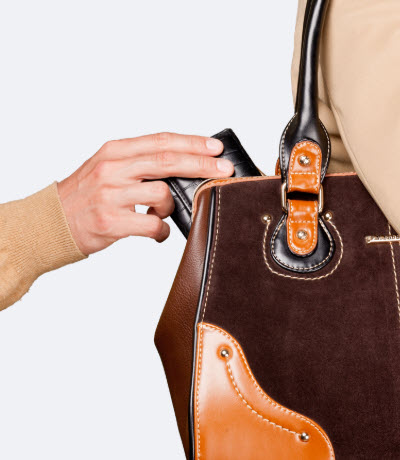Digital Security When Traveling
1 August 2025

In an age where our smartphones hold our boarding passes, hotel reservations, banking apps, and travel photos, digital security has become as essential to travel preparation as packing the right clothes. Each year, thousands of travelers fall victim to digital scams, from compromised Wi-Fi networks in airport lounges to sophisticated ATM skimmers in popular tourist destinations.
These threats aren’t just inconveniences—they can derail vacations, drain bank accounts, and create months of recovery work after you return home.
Fortunately, protecting your digital life while traveling doesn’t require technical expertise or expensive equipment—just awareness and a few practical precautions. The strategies in this guide will help you create layers of security that keep your personal information safe without limiting your ability to stay connected and enjoy your journey. By implementing these simple safeguards before, during, and after your trip, you can focus on creating memories rather than managing digital disasters.
Remember, replacing a lost device is manageable, but recovering from identity theft can take years! Let’s get started!
Digital Security Starts Before You Leave Home
Just as you wouldn’t leave for vacation without locking the front door, your digital life needs similar protection. Taking a few simple steps before your trip can dramatically reduce your vulnerability to cyber threats and give you peace of mind while traveling.
- Update all devices and software—Update your phone, tablet, and laptop to the latest operating system updates and app versions. These updates often contain security patches for newly discovered vulnerabilities.
- Audit and strengthen passwords – Change passwords for travel-related accounts (airlines, hotels, banking) to strong, unique combinations. Consider using a reputable password manager like LastPass or 1Password to keep track of them securely.
- Enable two-factor authentication (2FA) – Add this extra layer of security to your email, banking, and cloud storage. If someone tries to log in, you’ll receive a verification code, preventing unauthorized access even if your password is compromised.
- Install security apps – Before departure, add a reputable VPN (Virtual Private Network) app and find-my-device tracking software. Reliable options include NordVPN, ExpressVPN, and Surfshark, which work across multiple devices with simple interfaces.
- Prepare for worst-case scenarios – Know how to remotely wipe your smartphone and have a plan for communication if your phone is lost or stolen. Store key contact information somewhere besides your phone in case it’s lost or stolen.
- Check with your bank – Most banks no longer require that you inform them of travel plans, but you should still ask what legitimate transactions could be flagged as suspicious while you’re traveling. This way, you can avoid situations that could lock your card and limit your access to funds when you need them.
These preparations may take an hour or two, but they create a strong foundation for digital security throughout your journey. Think of it as an insurance policy that costs nothing but time. If something does go wrong—a lost phone, a suspicious charge, or a compromised account—you’ll be able to respond quickly and effectively, minimizing disruption to your travel experience.
Pro tip: If you’re concerned about your digital devices being searched at customs upon return, consider uninstalling any apps you won’t need while traveling. You can always install them again when you return.
Staying Safe Online While Traveling
The convenience of free Wi-Fi at airports, hotels, cafés, and tourist attractions comes with significant hidden risks. These networks are often unencrypted, meaning anyone on the same network can potentially intercept your data—including passwords, credit card numbers, and personal information.
Understanding these risks and implementing simple protective measures can keep your digital life secure while still enjoying connectivity during your travels.
- Verify network authenticity – Always confirm the exact network name with staff before connecting. Cybercriminals often create similarly named networks (like “Hotel_Guest” vs. the legitimate “Hotel-Guest”) to trick travelers.
- Turn on your VPN (Virtual Private Network) before connecting – This creates an encrypted tunnel for your data, even on unsecured networks.
- Avoid sensitive transactions – Never access banking sites, make purchases, or enter passwords while on public Wi-Fi unless you use a VPN. Save these activities for when you have a secure connection.
- Consider mobile alternatives – Use your phone’s mobile data and personal hotspot feature for more sensitive online activities.
- Turn off auto-connect – Disable settings that automatically connect to available Wi-Fi networks or Bluetooth devices. This prevents your device from connecting to networks when your VPN may be disabled.
The most secure approach is to treat every public Wi-Fi network as potentially compromised. While this might sound paranoid, cybersecurity experts consistently find vulnerabilities in hotel and airport networks worldwide. Using a combination of VPN protection, careful network selection, and saving sensitive transactions for secure connections, you can stay connected without putting your personal information at risk.
Safeguarding Your Money While Traveling
Financial fraud targeting travelers has become increasingly sophisticated, from hidden card skimmers at ATMs to compromised payment terminals in tourist areas. Protecting your financial information requires specific precautions that balance security with the practical need to access funds during your journey.
- Use dedicated travel cards – Consider using separate credit cards specifically for travel rather than your everyday cards. This limits exposure if compromised and makes suspicious charges easier to identify.
- Inspect ATMS before using – Check the keypad and card reader to see if it’s loose or an overlay. You should always use ATMs that are close to or inside banks because those are more closely monitored than an ATM on the street or in a restaurant.
- Monitor your accounts – Set up transaction alerts on your accounts and check balances every 1-2 days while traveling. Quick detection of fraud allows for faster response and easier resolution.
- Bring backup payment methods – Be sure you have enough local cash on hand each day to cover what you need in case your credit card is stolen or lost. Keep a secondary backup credit card in a different place (like an envelope in your suitcase).
Pro tip: Watch this video by CBS New York to learn how to inspect an ATM quickly for skimmers.
Financial security while traveling requires balancing convenience with protection. The goal isn’t to make transactions impossible but to create enough safeguards that your accounts remain secure without disrupting your travel experience. Most financial institutions now offer robust fraud protection, but prevention remains your best defense against the hassle and stress of dealing with compromised accounts while away from home.
Damian Tysdal is the founder of CoverTrip, and is a licensed agent for travel insurance (MA 1883287). He believes travel insurance should be easier to understand, and started the first travel insurance blog in 2006.
